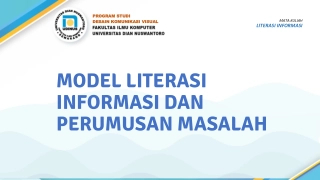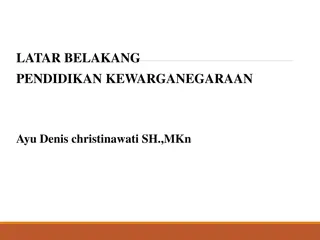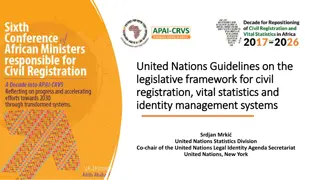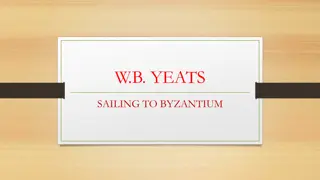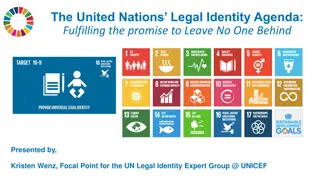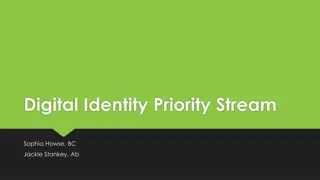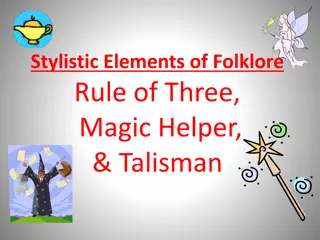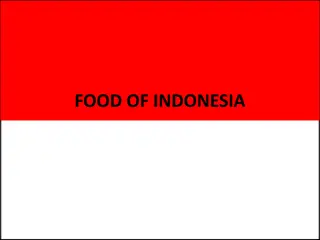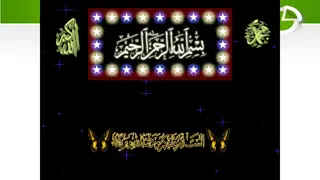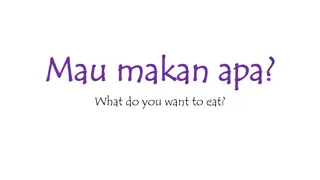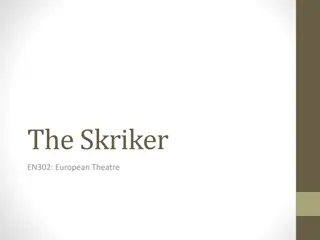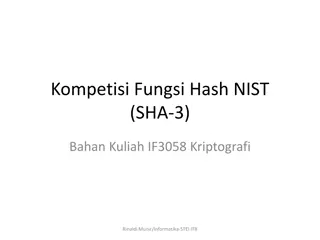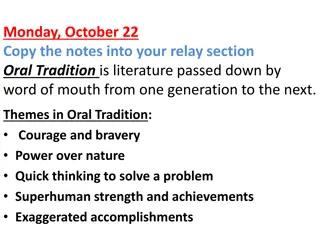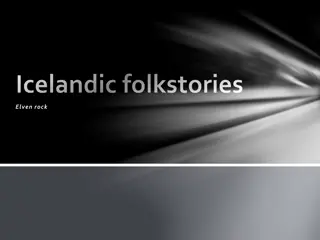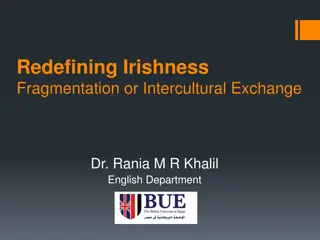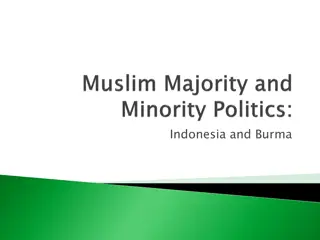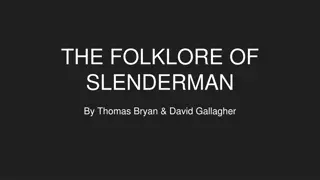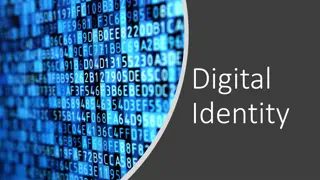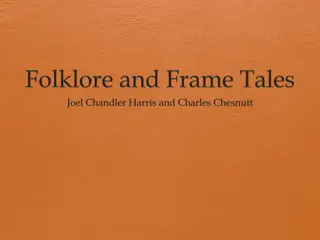Exploring Indonesian Identity in Pego dan Putri Kayangan Folklore
The research delves into the Indonesian identity as portrayed in the folklore of Pego dan Putri Kayangan, originating from the Penajam Paser tribe. It explores how character values and ideals play a role in shaping the nation's identity, reflecting concepts such as diversity, unity, and cultural heritage.
Download Presentation

Please find below an Image/Link to download the presentation.
The content on the website is provided AS IS for your information and personal use only. It may not be sold, licensed, or shared on other websites without obtaining consent from the author. Download presentation by click this link. If you encounter any issues during the download, it is possible that the publisher has removed the file from their server.
E N D
Presentation Transcript
The Indonesian Identity in Pego dan Putri Kayangan Folklore No. Abstract: ABS-ICOLLITE-23127 Riani Riani, Edi , Edi Setiyanto Setiyanto, Erlinda Rosita, Dian , Erlinda Rosita, Dian Susilastri Susilastri, , Syarifah SyarifahLubna Lubna National Research and Innovation Agency
INTRODUCTION According to RI Law Number 3 of 2022, East Kalimantan will be the location of the capital city. It is not impossible for the growth of IKN to "eliminate" the community from attempts to conserve the indigenous tribal wisdom values of the potentially endangered IKN population and reinforce the Indonesian identity that supports the development of IKN in national and state life. IKN is a new home that accommodates and defends the diversity of many ethnicities from across Indonesia; as a result, a character that supports the ideals of Indonesian identity as indicated in the 18 characters specified by the Ministry of National Education in 2011. This research aims to describe the story of Indonesian identity (character values). The "Pego dan Putri Kayangan" folktale comes from the Penajam Paser tribe, an indigenous clan that lives in parts of the National Capital. The Paser tribe has been an indigenous group in the Penajam Paser region for millennia.
LITERATURE REVIEW The identity of the Indonesian nation (Indonesian identity) is embodied in the concept that a nation and a state consisting of various diversity and differences can unite because it is based on Pancasila as the basis of the state and national ideology and is framed through Unity in Diversity. Character education is a system that instills in a person's character values that include knowledge, awareness, will, and action for him to carry out these values towards God Almighty, himself, other people, his environment, and his nation and country. The Indonesian nation's particular identity is articulated through a set of character education ideals that include (1) religious, (2) honest, (3) tolerant, (4) discipline, (5) hard work, dedication, (6) creative, (7) independent (8) democratic, (9) curios, 10) national pride, motherland love, (12) appreciating success, (13) sociable and friendly, (14) peace-loving, (15) enjoying reading, (16) environmentalism, (17) social concern, and (18) responsible. This distinct identity is derived from the ideals, teachings, and life philosophy of religion, Pancasila, and culture, as well as the national education objectives Based on Pancasila, Indonesian identity can also be defined as a notion that embodies the values, culture, history, and features of the distinctive character inherent in the Indonesian nation.
van Dijk's discourse analysis theory. Text, social cognition, and social context are the three components of this discourse analysis. This research is entirely concerned with textual analysis. There are three types of text structure: macrostructure, superstructure, and microstructure. The text's introduction, expansion, and conclusion are referred to as the macrostructure. This study examines the macrostructure, superstructure, and microstructure of Indonesian identity-reflecting character values.
METHOD This study is qualitative descriptive since it tries to investigate the character values inherent in the folklore "Pego dan Putri Kayangan . "Pego dan Putri Kayangan" as part of a collection of Paser and Berau folklore published by The Language Institution of East Kalimantan (Kantor Bahasa Kalimantan Timur) The data for this study are extracted from the text Pego dan Putri Kayangan" Character values in folklore could be deduced from the story's main topic, which was an example of the macrostructure; the section on how conflicts were resolved was an example of the superstructure; individual words, phrases, and paragraphs were examples of the microstructure. The classification of character values in the macrostructure, superstructure, and microstructures is related to the 18-character education values that reflect Indonesian identity in national and state life. These values might be found in the macro, superstructure, and microstructures.
FINDING AND DISCUSSION Synopsis In the headwaters of the Kandillo river, there lived a young orphan named Pego. After Pego grew older, he wanted to have his own rice field. For three days Pego succeeded in clearing land for farming. However, the next day, the land that Pego had cleared became forest again. From his hut, at night, Pego saw seven birds circling and then perched on a tree branch while singing. Not long after, the birds were gone. Instantly, Pego's pioneering land turned into a forest. In the morning, Pego returned to clearing his land while making snares on the wooden trees where the seven naughty birds stopped. In the morning, Pego saw a bird caught in his trap. It turns out that the beautiful feathered bird is the incarnation of a princess from heaven. After some time, when the bird turned into a beautiful girl, they married and had a son. Between Pego and his wife, they promise to keep the origins of the princess from heaven a secret. Although, in the end, the promise was forbidden by Pego. Pego's wife turned into a bird and flew to heaven. He left Pego in sorrow and regret for breaking their promise. With a deep feeling of sadness, Pego took his son to look for his wife to heaven. On his way, Pego helped a thirsty rat, a fish that was floundering in drought and a large ant, a big firefly. As a thank you to Pego, Rats, Fish, Ants and Fireflies incense. The incense can be burned if Pego needs their help. The bright path to heaven has arrived. Pego saw and helped a Garuda bird whose leg was entangled in a wooden root. As a thank you, the Garuda bird took Pego and his son to fly to heaven. In heaven, Pego met an old man who helped him face the King of Heaven and it turned out that the King was the father of Putri Kayangan. To get Putri Kayangan back as his wife, Pego had to face many tough tests from the King. Thanked to the help of Rats, Fish, Ants, and Fireflies, Pego succeeded and was allowed to bring Putri Kayangan back to his hometown.
Independent Character Example: To live everyday, Pego tries his best. He doesn't want to be a burden to others . (p. 64) However, feeling unable to prepare everything together, Pego started on his own. (p. 73) Hard Work Character Example: ... Every day, Pego hunts forest animals, such as deer, deer, and hornbills. Sometimes, Pego goes fishing or catching fish in the river .(p. 64). By working hard alone, Pego pioneered land for farming .(p. 73) Social Care and Responsibility Character Example of social care: Pego, I want to ask your help to clear land for my rice field. Do you want?". "Yes, sir. Incidentally, I don't have a job, answered Pego. (p. 65) grown men stood in a row holding a wooden sapling that was two meters long and two or three centimeters in diameter. Behind the hole drillers were women and youths. They put the grains of rice into the hole . (p. 68) "Help me. I'm so thirsty . "Hearing the rat's request, Pego immediately handed over the water he was carrying ." (pp. 80 81)
Responsible examples: After finishing pioneering in the afternoon, Pego returned to his house. He saw that there was food available in his house. Poor Pak Kutoi's wife, took the trouble to deliver this meal, muttered Pego. (p. 66) For the sake of my children and wife, I accept the King's test." (p. 86) Friendly and Communicative Character Example: Before logging, one of the people will look for the biggest tree in the area. If it is found, the bigger tree is cut down first . "I will look for the biggest tree," said Pego. Okay, replied a Pego friend. (pp. 66 67) Alright, Mister Kutoi. I am ready to plant rice. "Yes, Pago. I have also conveyed to several neighbors. Please also pass it on to some of the neighbors . (p. 67) I don't know guys. I don't have the courage to decide when to get married. You don't say that, Pego. A match cannot be determined . Pego's friends tease them so they laugh. (p. 72). Creative Character Example: At the time of harvest this will be used for parents to share stories with the youth. Meanwhile, there are also those who take advantage of moments like that to recite rhymes . (pp. 68 71) "Oh, apparently it was you guys who caused my path to become a forest Back. Watch out you unlucky birds, tomorrow I'll make you a snare, . (pg 75) Motherland Love Character Example: I want to go back to my hamlet with my wife and children. I want to build a harmonious and peaceful household. (p. 91)
CONCLUSION The findings and the analysis show that the Pego and Putri Kayangan folklore contains Indonesian identity. It is because it contains independence, hard work, social care and responsible, friendly and communicative, and love of the motherland. This narrative can be utilized in character education because it possesses virtuous elements that encourage independence, hard work, social care and responsibility, friendly and communicative, and love of the motherland.



